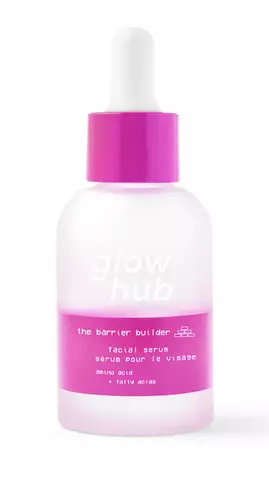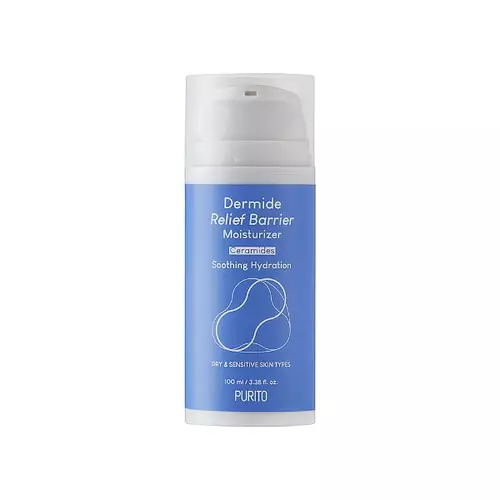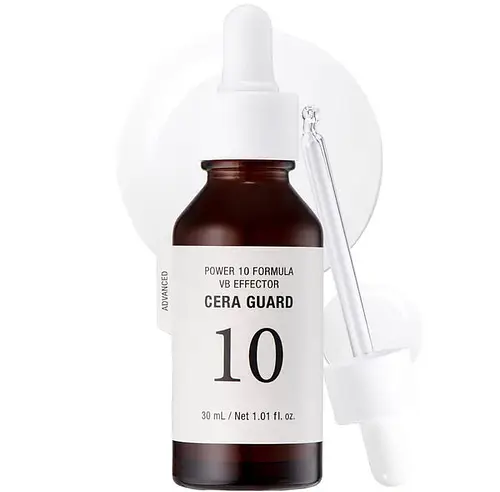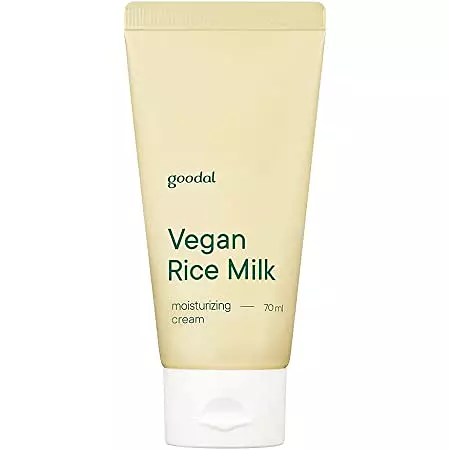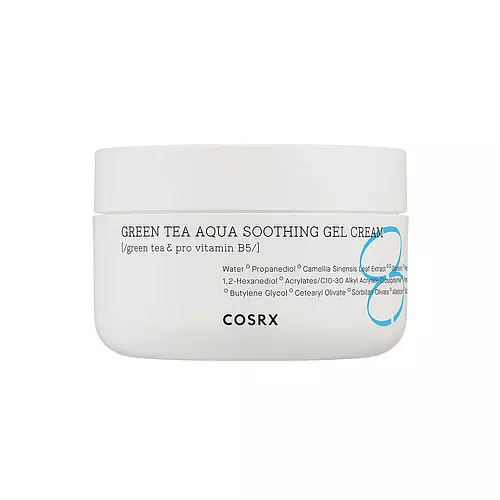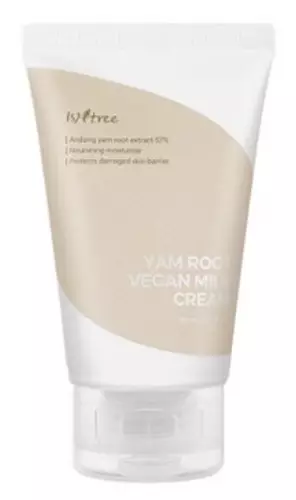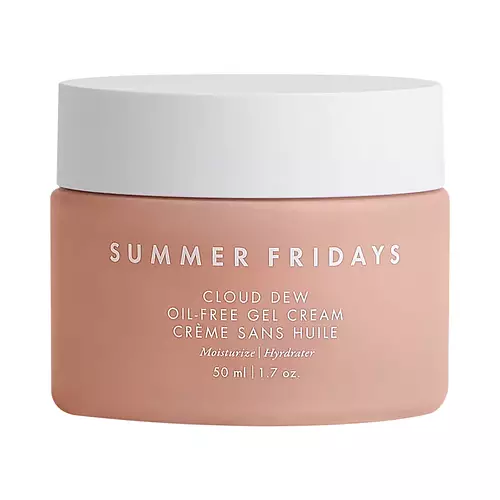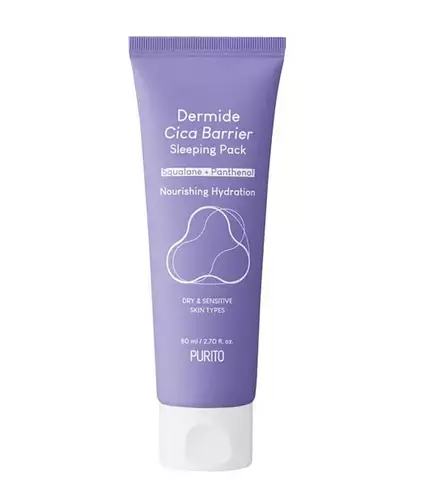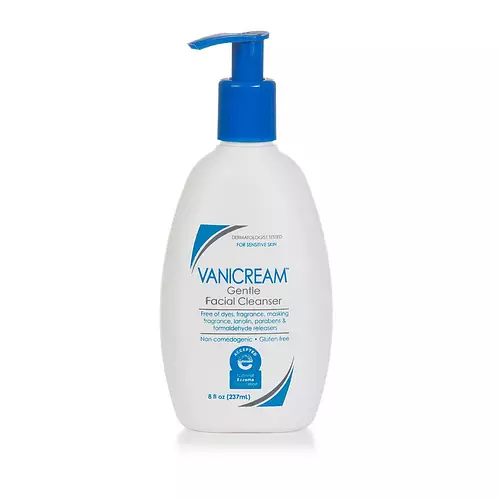Glow Hub Beauty The Barrier Builder Versus PURITO Dermide Relief Barrier Moisturizer
Updated on May 24, 2024
Overview
What they are
These products are both vegan, cruelty-free, and reef safe . They have a total of 9 ingredients in common
Cool Features
They both contain ceramides
Suited For
They're both likely to be good for anti aging, dry skin, brightening skin, sensitive skin and scar healing
Free From
They both do not contain any harsh alcohols, common allergens, fragrances, parabens, silicones or sulfates
We independently verify ingredients, and our claims are backed by peer-reviewed research. Spot a product that needs an update? Let us know.
Ingredient Info
Glow Hub Beauty The Barrier Builder 41 ingredients
PURITO Dermide Relief Barrier Moisturizer 31 ingredients
At a glance
Click on any of the items below to learn more
Glow Hub Beauty The Barrier Builder 41 ingredients
PURITO Dermide Relief Barrier Moisturizer 31 ingredients
Notable Ingredients
This product contains 1 ingredient that may have this attribute:
This product contains 2 ingredients that may have this attribute:
This product contains 5 ingredients that may have this attribute:
Benefits
This product contains 8 ingredients that may have this attribute:
This product contains 7 ingredients that may have this attribute:
This product contains 5 ingredients that may have this attribute:
This product contains 1 ingredient that may have this attribute:
This product contains 7 ingredients that may have this attribute:
This product contains 1 ingredient that may have this attribute:
This product contains 2 ingredients that may have this attribute:
This product contains 4 ingredients that may have this attribute:
Concerns
This product contains 1 ingredient that may have this attribute:
This product contains 1 ingredient that may have this attribute:
Benefits
This product contains 5 ingredients that may have this attribute:
This product contains 3 ingredients that may have this attribute:
This product contains 4 ingredients that may have this attribute:
This product contains 2 ingredients that may have this attribute:
This product contains 1 ingredient that may have this attribute:
This product contains 1 ingredient that may have this attribute:
Concerns
This product contains 2 ingredients that may have this attribute:
Ingredients Side-by-side
Ingredients Explained
These ingredients are found in both products.
Ingredients higher up in an ingredient list are typically present in a larger amount.
Water. It's the most common cosmetic ingredient of all. You'll usually see it at the top of ingredient lists, meaning that it makes up the largest part of the product.
So why is it so popular? Water most often acts as a solvent - this means that it helps dissolve other ingredients into the formulation.
You'll also recognize water as that liquid we all need to stay alive. If you see this, drink a glass of water. Stay hydrated!
Learn more about WaterGlycerin is already naturally found in your skin. It helps moisturize and protect your skin.
A study from 2016 found glycerin to be more effective as a humectant than AHAs and hyaluronic acid.
As a humectant, it helps the skin stay hydrated by pulling moisture to your skin. The low molecular weight of glycerin allows it to pull moisture into the deeper layers of your skin.
Hydrated skin improves your skin barrier; Your skin barrier helps protect against irritants and bacteria.
Glycerin has also been found to have antimicrobial and antiviral properties. Due to these properties, glycerin is often used in wound and burn treatments.
In cosmetics, glycerin is usually derived from plants such as soybean or palm. However, it can also be sourced from animals, such as tallow or animal fat.
This ingredient is organic, colorless, odorless, and non-toxic.
Glycerin is the name for this ingredient in American English. British English uses Glycerol/Glycerine.
Learn more about GlycerinCeramide NP is a type of ceramide.
Ceramides are intercellular lipids naturally found in our skin that bonds dead skin cells together to create a barrier. They are known for their ability to hold water and thus are a great ingredient for dry skin.
Ceramides are an important building block for our skin barrier. A stronger barrier helps the skin look more firm and hydrated. By bolstering the skin ceramides act as a barrier against irritating ingredients. This can help with inflammation as well.
If you would like to eat ceramides, sweet potatoes contain a small amount.
Read more about other common types of ceramides here: Ceramide AP Ceramide EOP
Learn more about Ceramide NPCholesterol is a class of organic molecules called lipids. It helps hydrate your skin and is essential to having a healthy skin barrier.
Our skin naturally contains cholesterol in the outermost layer. Besides cholesterol, it also contains ceramides and fatty acids. Cholesterol makes up about 1/4 of your skin's outer layer and barrier. Your skin barrier is responsible for keeping allergens and microbes out. Having a healthy skin barrier is also responsible for keeping your skin firm and plump.
Our bodies use cholestrol to create vitamin D, steroid hormones, and more.
Learn more about CholesterolCeramide NS is a type of Ceramide. Ceramides are intercellular lipids naturally found in our skin that bonds dead skin cells together to create a barrier. They are known for their ability to hold water and thus are a great ingredient for dry skin.
Ceramide NG,Ceramide NS,1,3-Hexadecanediol, 2-Hexadecanamide,Palmitoyl-C16-Dihydrosphingosine,1-Stearoyl-C18-Sphingosine
Ceramide AP is a type of Ceramide.
Ceramides are intercellular lipids naturally found in our skin that bonds dead skin cells together to create a barrier. Having a strong skin barrier leads to more firm and hydrated skin.
They are known for their ability to hold water and thus are a great ingredient for dry skin. By bolstering the skin ceramides act as a barrier against irritating ingredients. This can help with inflammation as well.
If you would like to eat ceramides, sweet potatoes contain a small amount.
Read more about other common types of ceramides here: Ceramide NP Ceramide EOP
Learn more about Ceramide APCeramide EOP is a type of Ceramide.
EOP stands for a linked Ester fatty acid, a linked Omega hydroxy fatty acid, and the Phytosphingosine base.
Ceramides are intercellular lipids naturally found in our skin. They bind dead skin cells together to create a barrier. The ceramides in our skin have the ability to hold water to keep our skin hydrated.
Ceramides are an important building block for our skin barrier. A strong skin barrier helps with:
If you would like to eat ceramides, sweet potatoes contain a small amount.
Read more about other common types of ceramides here:
Learn more about Ceramide EOPCetyl Alcohol is a fatty alcohol. Fatty Alcohols are most often used as an emollient or to thicken a product.
Cetyl Alcohol is not related to SD alcohol, denatured alcohol, or ethyl alcohol. The FDA allows products labeled "alcohol-free" to have fatty alcohols.
Its main roles are:
Learn more about Cetyl AlcoholEthylhexylglycerin (we can't pronounce this either) is commonly used as a preservative and skin softener. It is derived from glyceryl.
You might see Ethylhexylglycerin often paired with other preservatives such as phenoxyethanol. Ethylhexylglycerin has been found to increase the effectiveness of these other preservatives.
Ingredient Ratings
Here's what our community thinks of the ingredients in these products.
When to use
Glow Hub Beauty The Barrier Builder 41 ingredients
PURITO Dermide Relief Barrier Moisturizer 31 ingredients

Reviews
Here's what our community thinks
Glow Hub Beauty The Barrier Builder 41 ingredients
PURITO Dermide Relief Barrier Moisturizer 31 ingredients
Lapaki
I was looking for a ceramide-rich alternative to Drunk Elephant's Lala Retro Whipped Cream and found this beauty. It contains five types of...
I was looking for a ceramide-rich alternative to Drunk Elephant's Lala Retro Whipped Cream and found this beauty. It contains five types of ceramides, is scentless and has a nice texture. The moisturizer works well with my other skincare and makeup products, doesn't pill and isn't heavy. It also has a practical pump - easy and hygienic. And it's silicone free, vegan & cruelty free. Do I and my dry skin like it? Very much!
Totoro
I needed a ceramide moisturizer without silicone for my sensitive skin. Two dermatologists on YouTube recommended this (Dr. Ellis and Dr. Idriss)...
I needed a ceramide moisturizer without silicone for my sensitive skin. Two dermatologists on YouTube recommended this (Dr. Ellis and Dr. Idriss) and I started using it in September 2023. It’s gentle, soothing, moisturizing and a great value.
